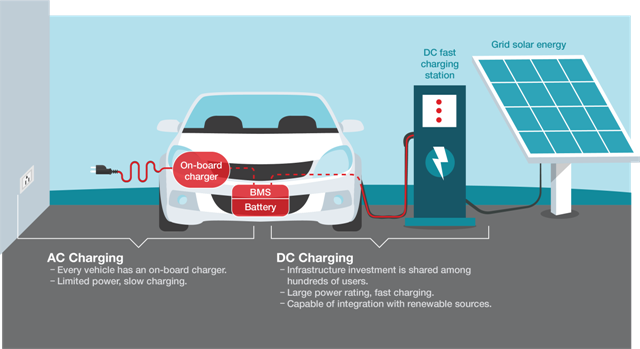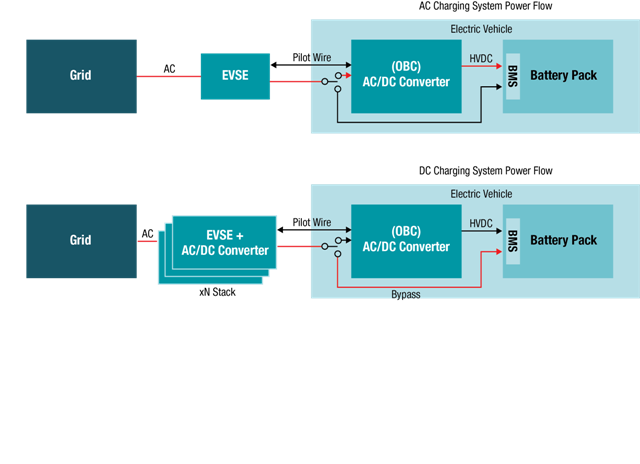
Although most EV drivers would charge their vehicles at home using a (level 1) residential charger, there is a need for secondary option of being able to fast-charge EVs on-the-go at public (level 2/3) charging stations at a mall/office parking lot, state/national highways etc. specifically to address the needs of commercial fleet EVs.
Mr. Jayanth Rangaraju, End Equipment Manager, Texas Instruments India
Owning an electric vehicle (EV) charging station is an integral part of owning an EV. Since electric vehicles are the future there is no hiding from this fact. Frost and Sullivan estimates sales of approximately 2-2.5 million EVs in India by 2030, accounting for about 30-35 per cent of the new vehicles market. Although, the idea of trading a gas pump for a plug seems like a wonderful thing it’s a lot more complicated than just that. Charging an electric car could take 6 to 8 hours (with level 1) to get 200km of driving range compared to fuelling a car with gasoline for 5 minutes to get 2000km of driving range. In order for the PHEV/EV to be successful, it would require a well-connected/ omnipresent EV charging infrastructure.
Despite having separate functions for charging a vehicle, similarities in the naming conventions (“on-” and “off-“ board chargers) have caused general confusion about these two systems. However there are stark differences in not just the function of the chargers but also the voltage requirements of the chargers and how they charge the vehicle. The power modules of an on-board and off-board charger are split based on charging power levels. The on-board charger has to condition (convert to high voltage DC) power from the off-board AC charger before supplying it to the battery management system (BMS), the off-board DC charger works without an on-board charger and directly charges the batteries in the PHEV.
The power modules of the on-board and off-board chargers are split based on the charging power levels. The off-board charger is generally designed to transfer higher kilowatts of power and requires a more sophisticated BMS on the PHEV. It increases the overall vehicle’s efficiency as the charger is not present in the vehicle. On the other hand, an on-board charger is generally designed for lower kilowatts of power transfer and adds significant weight to a PHEV.

Types of Charing Stations
There are mainly two types of charging systems: AC and DC charging systems. The AC charger powers the battery through the vehicle’s on-board charger, while a DC charger directly charges the vehicle’s battery.
Let’s first focus on AC charging stations, which the Society of Automotive Engineers (SAE) further characterized into two standard levels. A Level 1 EVSE (Electric Vehicle Supply Equipment) (typically a residential charger) uses commonly available 220 VAC power off the grid, draws current in the order of a 12 A to 16 A range and requires about 8 hours to fully charge a 16 kWH battery. A Level 2 EVSE (typically used in commercial spaces such as malls, offices, etc.) uses three-phase 440 VAC of the grid to power a more robust vehicle charger and draws up to 32A to completely charge a 16 kWH battery in about 8 hours.
Now let’s look at DC charging stations, also known as Level 3 fast charging station. This type of charging station takes AC power from the grid and then employs a power converter to supply high-voltage (300 V-750 V) DC at up to 400A directly to the vehicle’s battery. Level 3 bypasses the on-board charger on the EV. Since high power is directly supplied into the vehicle, the overall time required to charge is much, lower and explains why Level 3 has earned the name “fast charger.” The charging time for a typical 16 kWH battery is less than 30 minutes.
Charging Modes
- Mode 1 – slow charging from a regular electrical socket (single or three phase)
- Mode 2 – slow charging from a regular electrical socket, but equipped with an EV-specific protection arrangement
- Mode 3 – either slow or fast charging using a specific EV multi-pin socket with control and protection functions (according to SAE J1772 and IEC 62196 standards)
- Mode 4 – fast charging using a special charger technology such as Charge de Move (CHAdeMO)

Plug types
- Type 1 – single-phase vehicle coupler reflecting SAE J1772/2009 automotive plug specifications
- Type 2 – single and three-phase vehicle coupler reflecting the VDE-AR-E 2623-2-2 plug specifications
- Type 3 – single- and three-phase vehicle coupler equipped with safety shutters reflecting the EV Plug Alliance proposal
- Type 4 – fast charge coupler for special systems such as CHAdeMO
Generally charging your electric car is much more convenient where you get home, plug your car to a Level 1 charger at the end of the day and then unplug next morning when you are ready to drive somewhere again. But circumstances vary, for example commercial fleet vehicles need public chargers to stay serviceable round the clock or say your commute exceeds the maximum range of your EV you would need public chargers on the stage/national highways to recharge and continue to your trip.
Limited numbers of public charging station infrastructure is one of the key concerns that currently hold back green car enthusiasts from owning an EV. Not to mention upfront cost of an EV and the time that it takes to charge and EV to list out a few barriers. As more EVs and HEVs hit the road around the world, automotive system developers will need lower battery charging times in these vehicles, improve battery efficiency and density all without adding too much cost. Both the off-board and the on-board charger technologies will play a critical role in the deployment of battery-powered vehicles.
This calls for private-public consortium/partnerships along with regulatory support from the government to work together and develop new business models for successful adoption of EVs in mainstream markets. As for the implementation of electric vehicles on Indian roads, inspiration can be found from models fostered by our APAC neighbours mainly China, Japan and South Korea.
Texas Instruments integrated circuits and reference designs can help you design your next smarter and more efficient AC/DC charging stations or on-board chargers. For more details please visit us at www.ti.com







